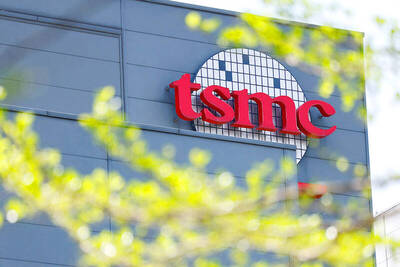One of Germany's showcase pieces of high technology, the high-speed magnetic levitation train "Transrapid," has divided opinion over the years like few other engineering developments.
The train's backers speak of its high speeds in excess of 400kph, as well as a combination of form, function and technology which promises to usher in a new era in transportation.
The Transrapid consortium calls the maglev (magnetic levitation) train the first innovation in railroad engineering since the advent of conventional railroads.
Instead of wheels and rails, the Transrapid, with its "synchronous longstator linear motor", hovers and is propelled forward by powerful electromagnetic forces along a specially-built guideway.
But the maglev's opponents say that the technology, while impressive at first glance, actually dates back to a German patent in 1934. It is one which wastes too much energy, they say, is too loud for the surrounding environment, and is superfluous anyway in view of the ongoing development of conventional high-speed railroads.
Who needs it, the sceptics ask, noting that other countries such as Japan have also developed maglev technology but have yet to put it into commercial use.
In Germany, the debate has been going on since 1984, ever since the first Transrapid prototype began racing around its circular test track in Emsland.
The Transrapid partner companies Siemens and ThyssenKrupp argue that this is a case where the state must shoulder more of the financial burden in the interest of securing jobs and of giving a boost to German-made high technology.
Without a commercial project at home, they argued, it would be difficult, if not impossible, to sell it abroad.
For nearly decade, the public sector and private firms in the Transrapid consortium battled over the costs of a project to link Berlin with the northern port city of Hamburg 250km away.
Initially projected at some DM3.6 billion (US$1.8 billion) in 1992, as the years went by the cost calculations for the Berlin-Hamburg route kept getting more expensive.
By the time the project was finally scuttled, in February 2000, the cost estimates had gone beyond eight billion marks -- well above the 6.1 billion mark economic feasibility limit set by the state.
Now pending in Germany are plans for the "Metrorapid," a Transrapid link between the cities of Dortmund and Duesseldorf, about 60km apart. Again, financing is the main problem.
Amid the domestic squabbling, the Transrapid company reached a deal in early last year with Shanghai Maglev Transportation Development for a 30km link between Pudong International Airport and Longyang Road Station in downtown Shanghai.
In breathtaking speed, the Shanghai Transrapid rail was built under the direction of project director Wu Xiangming. So the honors for the first-ever commercial Transrapid project will go to China, when on Dec. 31, the Shanghai Transrapid takes off on its inaugural "VIP Run" with Chinese Premier Zhu Rongji (
The Shanghai Transrapid has already gone 443kph in test runs.

WEAKER ACTIVITY: The sharpest deterioration was seen in the electronics and optical components sector, with the production index falling 13.2 points to 44.5 Taiwan’s manufacturing sector last month contracted for a second consecutive month, with the purchasing managers’ index (PMI) slipping to 48, reflecting ongoing caution over trade uncertainties, the Chung-Hua Institution for Economic Research (CIER, 中華經濟研究院) said yesterday. The decline reflects growing caution among companies amid uncertainty surrounding US tariffs, semiconductor duties and automotive import levies, and it is also likely linked to fading front-loading activity, CIER president Lien Hsien-ming (連賢明) said. “Some clients have started shifting orders to Southeast Asian countries where tariff regimes are already clear,” Lien told a news conference. Firms across the supply chain are also lowering stock levels to mitigate

Six Taiwanese companies, including contract chipmaker Taiwan Semiconductor Manufacturing Co (TSMC, 台積電), made the 2025 Fortune Global 500 list of the world’s largest firms by revenue. In a report published by New York-based Fortune magazine on Tuesday, Hon Hai Precision Industry Co (鴻海精密), also known as Foxconn Technology Group (富士康科技集團), ranked highest among Taiwanese firms, placing 28th with revenue of US$213.69 billion. Up 60 spots from last year, TSMC rose to No. 126 with US$90.16 billion in revenue, followed by Quanta Computer Inc (廣達) at 348th, Pegatron Corp (和碩) at 461st, CPC Corp, Taiwan (台灣中油) at 494th and Wistron Corp (緯創) at

NEGOTIATIONS: Semiconductors play an outsized role in Taiwan’s industrial and economic development and are a major driver of the Taiwan-US trade imbalance With US President Donald Trump threatening to impose tariffs on semiconductors, Taiwan is expected to face a significant challenge, as information and communications technology (ICT) products account for more than 70 percent of its exports to the US, Chung-Hua Institution for Economic Research (CIER, 中華經濟研究院) president Lien Hsien-ming (連賢明) said on Friday. Compared with other countries, semiconductors play a disproportionately large role in Taiwan’s industrial and economic development, Lien said. As the sixth-largest contributor to the US trade deficit, Taiwan recorded a US$73.9 billion trade surplus with the US last year — up from US$47.8 billion in 2023 — driven by strong

ASE Technology Holding Co (ASE, 日月光投控), the world’s biggest chip assembly and testing service provider, yesterday said it would boost equipment capital expenditure by up to 16 percent for this year to cope with strong customer demand for artificial intelligence (AI) applications. Aside from AI, a growing demand for semiconductors used in the automotive and industrial sectors is to drive ASE’s capacity next year, the Kaohsiung-based company said. “We do see the disparity between AI and other general sectors, and that pretty much aligns the scenario in the first half of this year,” ASE chief operating officer Tien Wu (吳田玉) told an